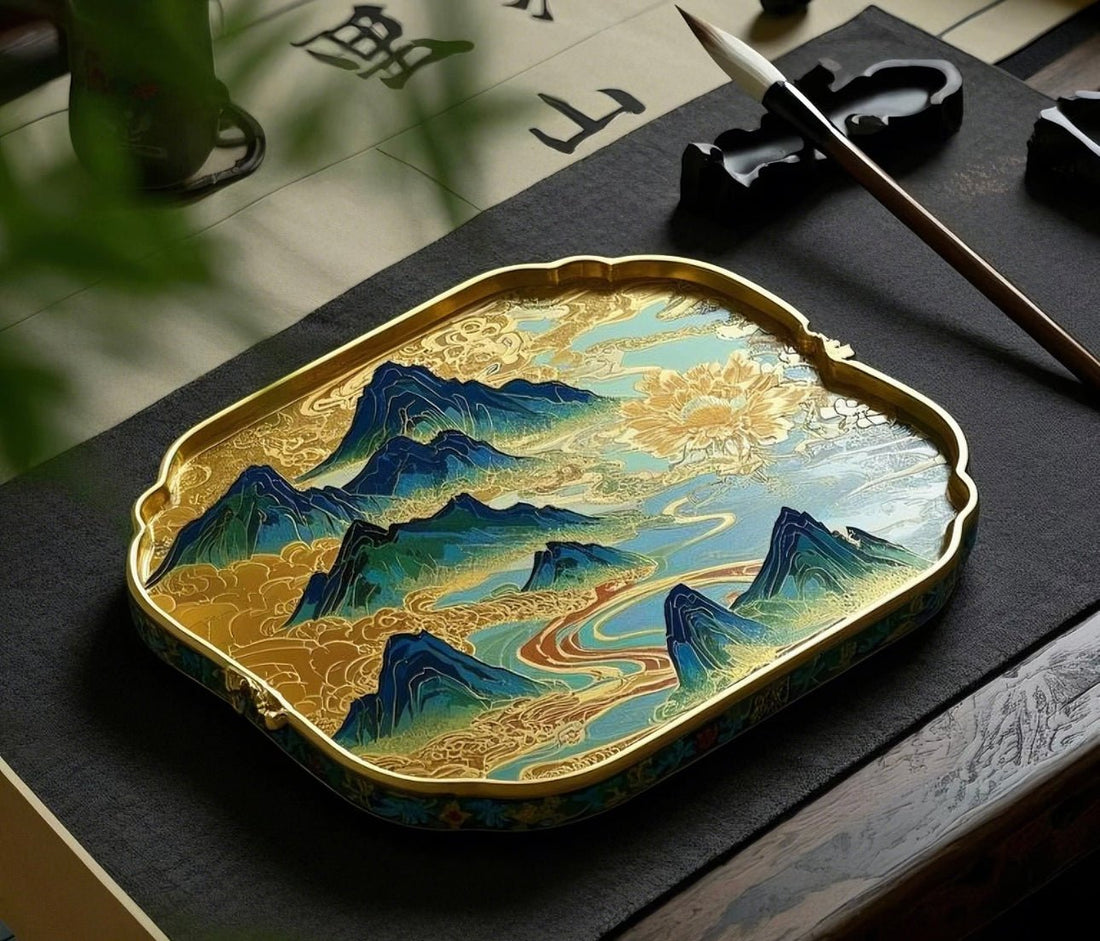
Cloisonné Enamel – The Royal Craft That Brings Art to Life
Share
Cloisonné enamel, also known as Jingtailan,is a centuries-old Chinese art form renowned for its intricate designs and vibrant colors. Originally reserved for emperors and nobles, this exquisite craft is now reimagined in modern jewelry, making it a luxurious yet accessible way to experience Chinese heritage.
The Art of Cloisonné Enamel
The creation of cloisonné enamel jewelry is a highly intricate and time-consuming process that requires exceptional precision and craftsmanship. Skilled artisans begin by carefully bending and shaping fine metal wires, often made of gold or copper, into delicate patterns, outlining the design with remarkable accuracy. These thin wires are then meticulously affixed to the metal surface, creating small compartments, or “cloisons,” which serve as boundaries for the vibrant enamel colors to come. Once the framework is completed, each compartment is carefully filled with finely ground enamel powder, which is made from a mixture of minerals and pigments to achieve an array of vivid hues.

After the enamel is applied, the piece undergoes multiple rounds of high-temperature firing in a kiln. This intense heat causes the enamel to fuse and solidify, resulting in its signature glossy and translucent finish. To perfect the final appearance, the surface is then polished to bring out its brilliance, ensuring a smooth and lustrous texture. The result is a breathtaking piece of jewelry that not only reflects the artisan’s skill but also embodies the rich heritage and artistic tradition of cloisonné enamel craftsmanship.
Symbolism in Cloisonné Jewelry
Each color and motif in cloisonné jewelry carries a meaningful message. Blue cloisonné represents wisdom and tranquility, making it ideal for those seeking inner peace. Red cloisonné symbolizes joy and prosperity, often worn during festive occasions and celebrations. Floral patterns such as peonies signify wealth, while lotus flowers represent purity and enlightenment.
Tips for Wearing and Caring for Cloisonné Enamel
• Avoid extreme temperatures
Excessive heat can cause enamel cracks. Cloisonné pieces are delicate and can be negatively affected by extreme temperatures. Prolonged exposure to intense heat, such as direct sunlight or high-temperature environments, can cause the enamel to expand and contract, which may lead to cracks or surface damage. Sudden temperature shifts, like moving from a cold area to a warm one, can also weaken the enamel, making it more vulnerable to chipping or breaking. To keep the piece in pristine condition, store it in a cool, stable environment away from direct heat sources.
• Store carefully – Use soft fabric pouches to prevent scratches. Cloisonné jewelry features intricate enamel work, which can easily be scratched if exposed to abrasive surfaces. For this reason, it is essential to store each piece separately in soft fabric pouches or a jewelry box lined with a gentle material. This will help avoid any accidental friction that could damage the delicate enamel surface. When traveling, wrapping the jewelry in soft cloth or placing it in a padded compartment can provide added protection.
• Pair with modern outfits – A cloisonné bracelet or pendant adds a bold, artistic touch to both casual and formal attire. Cloisonné jewelry’s vibrant colors and intricate designs make it a perfect accessory for any occasion. Whether you’re dressing up for a formal event or adding a unique touch to a casual outfit, a cloisonné piece can elevate your look. Its artistic and timeless nature seamlessly blends with contemporary fashion, making it a versatile addition to both modern and traditional wardrobes.
Cloisonné enamel jewelry is more than just an accessory—it is a piece of history and culture. Whether you are looking for a unique gift or a meaningful way to express your individuality, our handcrafted cloisonné collection offers the perfect blend of tradition and artistic beauty.

